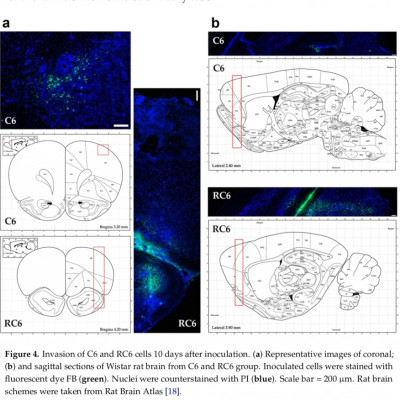Publication
Resistance to DNA damaging agents produced invasive phenotype of rat glioma cells-characterization of a new in vivo model
S. Stojkovic, A. Podolski-Renic, J. Dinic, Z. Pavkovic, J.M. Ayuso, L.J. Fernández, I. Ochoa, V.M. Pérez-García, V. Pešic, M. Pesic
Molecules 21, 843 (2016)
MOLAB authors
Abstract
Chemoresistance and invasion properties are severe limitations to efficient glioma therapy. Therefore, development of glioma in vivo models that more accurately resemble the situation observed in patients emerges. Previously, we established RC6 rat glioma cell line resistant to DNA damaging agents including antiglioma approved therapies such as 3-bis(2-chloroethyl)-1-nitrosourea (BCNU) and temozolomide (TMZ). Herein, we evaluated the invasiveness of RC6 cells in vitro and in a new orthotopic animal model. For comparison, we used C6 cells from which RC6 cells originated. Differences in cell growth properties were assessed by real-time cell analyzer. Cells’ invasive potential in vitro was studied in fluorescently labeled gelatin and by formation of multicellular spheroids in hydrogel. For animal studies, fluorescently labeled cells were inoculated into adult male Wistar rat brains. Consecutive coronal and sagittal brain sections were analyzed 10 and 25 days post-inoculation, while rats’ behavior was recorded during three days in the open field test starting from 25th day post-inoculation. We demonstrated that development of chemoresistance induced invasive phenotype of RC6 cells with significant behavioral impediments implying usefulness of orthotopic RC6 glioma allograft in preclinical studies for the examination of new approaches to counteract both chemoresistance and invasion of glioma cells.















